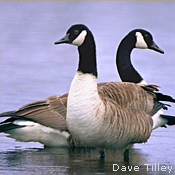Ecoregions are areas that have distinctive, recurring patterns of vegetation and soil development, that are determined and controlled by local climate and geology. Also called “natural regions,” ecoregions differ from each other in their combinations of plant communities, landscapes, geology, and other features.
Sub-categories of ecoregions, subregions (sometimes called ecodistricts) are smaller areas which differ slightly from each other in geology and geomorphology (how surface landscape features are formed).
Nine ecoregions have been identified on the island of Newfoundland, thanks to the founding work of Dr. A.W.H. Damman and then Susan J. Meades. In addition, several of the Island’s ecoregions can be further broken down into 21 subregions.
In Labrador, eleven ecoregions and 39 subregions have been identified through invaluable work of the Labrador Conservation Blueprint, as described in the Labrador Nature Atlas.
This makes 20 ecoregions and 60 subregions in the province.
The province’s ecoregions and subregions provide habitat for many species of plants, birds, and mammals. There are also thousands of invertebrates (insects and worms), fungi, and algae and countless micro-organism species, all of which are vital to our ecosystems.
Because of the latitudes and area the province spans, many plant and animal species reach their northern or southern limits here.
The design of many of the current and future protected areas in the province is based on protecting representative and pristine portions of all of our ecoregions and subregions. This, in turn, should play a key role in ensuring the survival of all plant and animal species, into the future.
To find out more about each of the province’s ecoregions and subregions, check out the Ecoregion Brochures in the Library.
Adobe® Acrobat® Reader software can be used for viewing PDF documents. Download Acrobat® Reader for free

